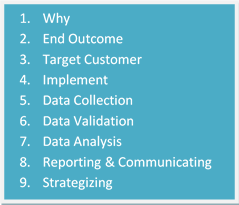Every business, small or large, has at least once relied on market research for business growth. It may be for expansion into a new market segment, or maybe when starting a new venture.
How else are you going to succeed in the corporate world, without knowing what your customers actually want?
Consider the “market” a hotel you are thinking of staying at while on your family trip. You would most likely search to know more about the hotel – pricing, amenities, location, facilities, etc., and on the basis of the same you would make your decision of staying in that hotel or not.
From the hotel’s point of view, they need to know about you and your preference so that they can convince you to choose their hotel and provide you with the best possible service. And they can only guess your choices so far without the help of any market research.
Similarly, your business needs to know about its customers so that they can retain them. It would be stupidity to go about head on into a market without knowing all the details; just like going into the battlefield without an armor and weapon.
Big businesses with indispensable resources hire experts to analyze the market. Small businesses are often closer to their customer base and can get a sense of buying habits, future needs, or other trends. But just how useful is this informal data and when should small firms conduct broader market research?
Let’s see how Market Research should go about in order to be efficient.

1. Why Do You Need Market Research?
I know Market Research can help you in numerous ways, all the time and at every stage of your business. But what is your reason for Market Research? What is the focus area for which you want to utilize this research? Here are a few examples:
- Identifying growth areas
- Gaining customer feedback and insights
- Expansion into a new territory
- Launching a new product
- Becoming the best in your niche / Competitor Analysis
These are some of the reasons for which you may want to exploit research areas. It is very essential to understand the pain points of your organization so as to correctly and efficiently develop and implement research strategies.
2. What Do You Require As The End Outcome Of This Research?
The end outcome of your research would (obviously) depend on your why (first step). Of course, you identify your why also through your outcome, but to answer the second question, you would need to narrow it further down and bring in some quantitative KPIs.
For eg. If your why is ‘Gaining customer feedback and insights’, the outcome you may be looking for is to find the share of satisfied and unsatisfied customers, or to know what else can you improve in your offered products / services to retain more customers, or maybe to analyze the share of hard core loyals, split loyals, shifting loyals or switchers from you total customer pool.
If your why is expansion into a new territory, like Spain, you may want to know about already existing potential competitors – their strengths and weaknesses, the market share and whether you need to customize your products / services as per the market needs or not.
3. Thirdly, Who Are You Targeting For This Research?
Before implementing the research, you need to figure out who / what are you planning on targeting for this? Is it a region, country, consumer, competitor, industry, potential clients, etc.? And through what medium will you reach them to gain the data? Surveys, e-mails, primary research, interviews etc.?
4. Fourthly, Implementation
Now that you have your strategy ready and on the go, it is time to go out in the field. Through your chosen method of research, you can now go and acquire the insights for your business growth.
Following are steps undertaken for research –
- Preparing the research design (survey, database etc.)
- Data collection
- Data validation
- Data analysis
- Generalization & Interpretation
- Preparation of Report
- Communicate the outcome
- Strategize and take calculated business decisions
Now that you have your results, what is the best possible way to utilize it?
After your research, you will have a clear idea of –
- Who are your customers?
- Why do they buy your products?
- Why do others prefer your competitor’s products over yours?
- What is your competitive advantage / USP that appeals to the customer?
- What share of market do you hold?
- What are your loss areas and which are the profitable areas?
Now how to convert these results into sales, you may ask.
Well you have almost 80% of the work done. Now all you have to do is to gather the researched & analyzed data and convert it into meaningful statistics so that you can pin point the pain areas and the gain areas.
Through this, you can estimate what are the best possible areas you can utilize for sales and how can you better improve them into increased sales converting areas. You can position yourself in a much better way in the minds of your target market to create a higher value of goodwill and brand image.

